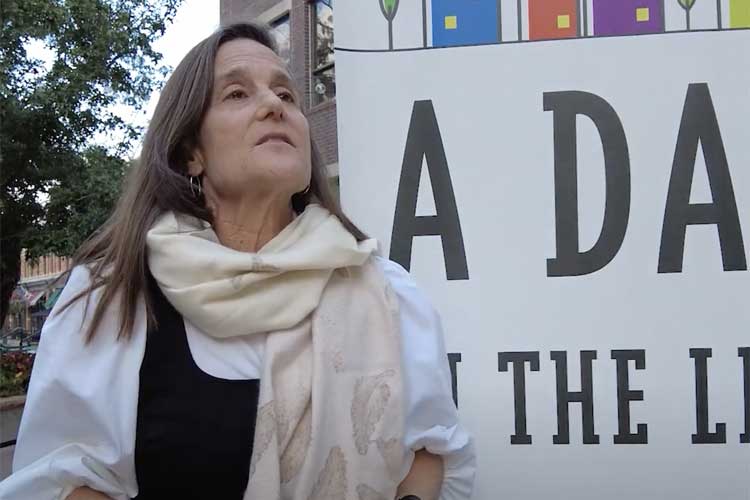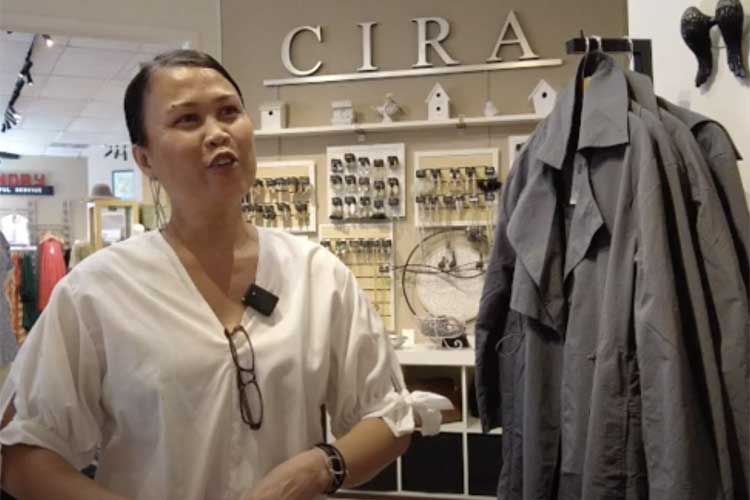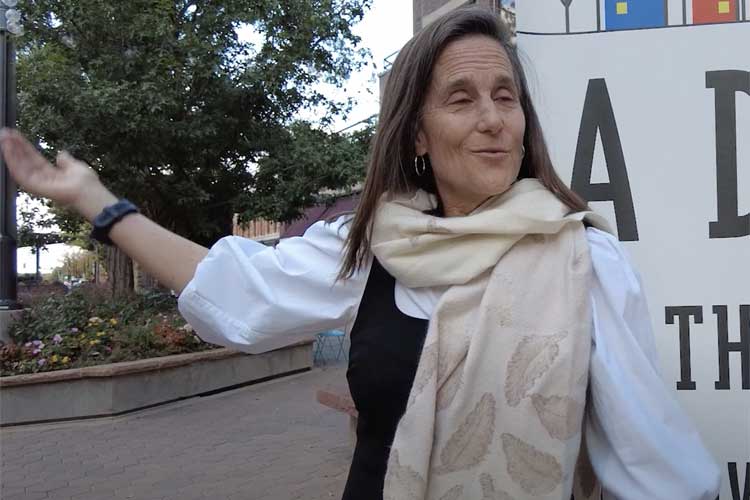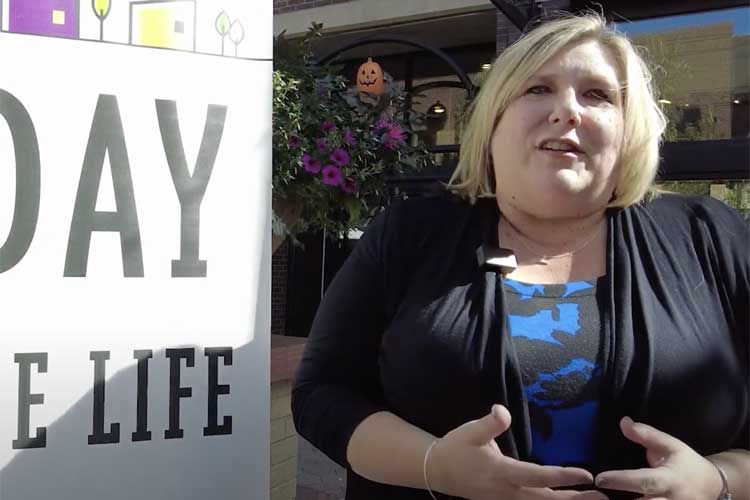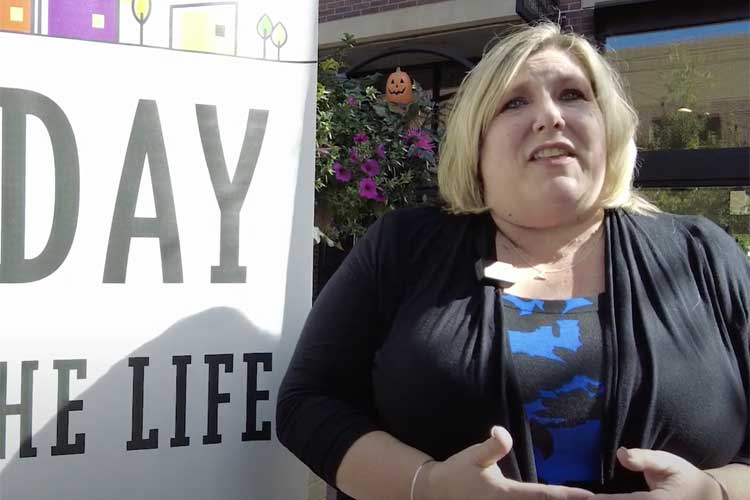The transformation that early adherents of downtown Fort Collins had hoped would occur has, for the most part, happened. Downtown became a neighborhood with residential developments melding with commercial establishments creating a culture that sets it apart from much of the rest of the city. Or from many other cities.

Matt Robenalt, executive director of the Downtown Development Authority
“Concentrating people in a commercial district creates a neighborhood that ebbs and flows beyond when businesses are open,” said Matt Robenalt, executive director of the Downtown Development Authority. “There’s a lot of round-the-clock activity, late night music, early morning trash pickup.”
Quoting a survey, Robenalt said “people are staying downtown two times as long as they did 10 years ago.”
Downtown Fort Collins is, for most residents living there, complete. There’s a drug store, three grocery stores, a hardware store, places to buy household necessities and “lots of things you don’t need but desire,” he said. He noted, however, that the “healthy offering for women’s clothing” is not counterbalanced with similar offerings for men.
Defining the district
Downtown Fort Collins is a sprawling district that extends far, far beyond the Old Town Square geographic center where much of the on-street activity happens summer or winter. Its boundaries are not easy to describe. Imagine reading a metes and bounds property description; the DDA boundaries are like that, with parcels added over time to meet economic conditions.
It stretches generally south to Mulberry (or Laurel near Colorado State University), north to Vine Drive, west to Meldrum Street, and east to Ninth Street and Lemay Avenue, but with a commercial addition east of Lemay and west of 12th Street.
None of the boundaries are straight lines and almost none follows a street exactly.
There are carve-outs of single-family neighborhoods. “Buckingham is considered ‘in close’ but it’s not in the district,” Robenalt said. Residential neighborhoods that did not want to be included and taxed were excluded from the original boundary approved by voters in 1981.
New inclusions in the district — 20 so far, are by voluntary request of owners. The DDA levies a five-mill tax on properties in the district to support its activities.
Still, the district has seen a “huge increase in residential” in recent years as multifamily developments petitioned to be a part of the district or redeveloped property already in the district.
“We’ve had 25 to 30 years of fast-paced investment in the district, and not a lot of large parcels remain,” he said. “A lot of the low-hanging fruit has been plucked from the tree. More difficult things remain.” Rising interest rates, also, have stalled some projects.
The district includes all of the historic central business area and some, but not all, industrial zones. The 100-acre Woodward Inc. is included.
Development, redevelopment
Development occurs within the district, often using public/private partnerships. “Developing property, either new or rehabilitated, comes with a higher per square-foot cost in the urban core,” he said. Public involvement of the DDA can help incentivize development or redevelopment.
Robenalt cited the first redevelopment project — when the late visionary Gene Mitchell conceived the notion of transforming decaying and blighted buildings into Old Town Square. The square serves as a pedestrian friendly gathering space between street-level retailers and restaurants. A performing arts stage allows what seems like near constant entertainment — if not scheduled then pop up in the form of impromptu guitar solos or folks pounding out tunes on a painted piano, which is part of the city’s Art in Public Places program. Kids climb on sculptures mounted above padded foundations or dodge streams of water from a water feature as their parents finish their ice cream cones on the patio.
Meanwhile above the square on the upper floors of buildings that are connected from one end of the block to the other, about 100 separate enterprises maintain their offices and try to conduct business as they watch the activity below.
“The city learned lessons from that (the square redevelopment) and has repeated it 130 times in the past 40 years,” Robenalt said.
“The tool we use (tax increment financing) is available only when a private owner makes an investment that raises the taxable value of the property. We don’t invest all the increment but set some aside for other purposes, such as enhanced alleyways, Old Town Square (maintenance), redevelopment in the River District.” The amount of the increment that is invested in a project will vary. The district “puts in enough so the project results in an outcome that we want to see, without giving away the farm,” Robenalt said. Some projects have been declined, he said.
The DDA has invested in cultural projects to benefit the community. In the 2010s, it bought a warehouse on Vine Street that is now used by nonprofit performing arts groups — five are there now — for rehearsals, set construction and so forth.
Robenalt described as “incredible” the support the downtown has received from the Bohemian Foundation and its founder, Pat Stryker.
“She deeply cares about downtown, and the Bohemian Foundation owns multiple properties downtown with ideas for future redevelopment,” he said.
Bohemian’s interest in the music scene has “changed the direction of the night-time economy,” he said.
Among the elements of the music scene is the Music District at 639 S. College Ave. The five-building, one-acre campus serves as a place for musicians to gather and develop their talents. It provides work spaces, interactivity with other musicians, access to resources such as studio space, connections with mentors or marketing professionals or intellectual property attorneys who can help turn the amateur into a professional.
It’s been so popular that it is at capacity and has a waiting list for others to participate, according to Melissa Reese, general manager of the district.
University connections
Colorado State University is not in the downtown district, but businesses on the north side of Laurel Street are included. The student presence, of course, is part of the economic engine that helps businesses in the district thrive, whether it’s a game day or not.
The CSU president’s house, now occupied by Amy Parsons, is on Magnolia, which is within the downtown district.
Robenalt said the downtown and CSU have maintained a close connection and have regular meetings to stay in touch. There are no active projects with the university, although the partnership between the downtown and the Powerhouse Energy Campus is ongoing. The Powerhouse is at 430 N. College Ave. Sometimes called the engines lab, it works to create more efficient, environmentally friendly engines as well as things like cleaner cookstoves to replace those used in many parts of the third world.
“We pay attention to things that we both have interests in,” Robenalt said.
Downtown businesses benefit from student spending, which tends to peak during the height of sports seasons. When the CSU Rams are out of town, sports bars become the popular hangouts for fans to watch their team.
Businesses new and old
Like any downtown, businesses come and go, college towns no exception. Fort Collins has a number of long-term businesses that have endured through generations.
The oldest downtown business is not a traditional mainstream retailer. It’s Hubbard Feeds, formerly known as Ranch-Way Feeds. It has been in continuous operation since 1868, or 155 years. Ranch-Way sold to Hubbard Foods, a division of Mankato, Minnesota-based Ridley USA Inc. in 2016. Hubbard continues to sell the Ranch-Way branded feed.
The second oldest is a traditional retail store, City Drug. At 209 N. College Ave., it anchors the north end of what most towns would call main street. City Drug roots extend to 1873, or 150 years.
Other businesses downtown are not that old, but it’s not hard to find those that began their origin stories in the 1940s, 50s, 60s and 70s. Jewelers, cooking and kitchen stores, spice shops, art galleries, restaurants, a garden shop, ice cream parlors, book stores, boutique clothing stores, and service businesses such as real estate and insurance all make their homes downtown.
The lure
With the draw of a wide variety of retailers, the slowed traffic on U.S. Highway 287 (College Avenue), the entertainment, the youthful presence of college students, the thousands of flowers growing in hundreds of planters, what else is needed to bring shoppers downtown?
The DDA and its partners have found ways to continually feed the engine — literally — that supports downtown.
Every third Friday, downtown merchants mount the Fort Collins Foodie Walk, a self-guided tour of culinary shops, restaurants and others offering samples. It runs from 5 to 8 p.m.
On the first Friday of the month from 6 to 9 p.m., a self-guided Downtown Fort Collins First Friday Art Walk takes center stage where over 30 art- and culture-related businesses invite those with interests in art to view the latest exhibits or activities.
Downtown Summer Sales and holiday promotions play to the seasons, as does Downtown Bon Appetit Week, a winter culinary celebration promotion in which chefs show off their creative offerings. In the winter after the holidays, Great Plates of Downtown promotion will be mounted again, from March 1 to 14, Downtown Fort Collins’ award-winning dining promotion and fundraiser returns for its 19th year. It is intended to spur restaurant activity at a normally slower time of the year.
Hungry yet?


